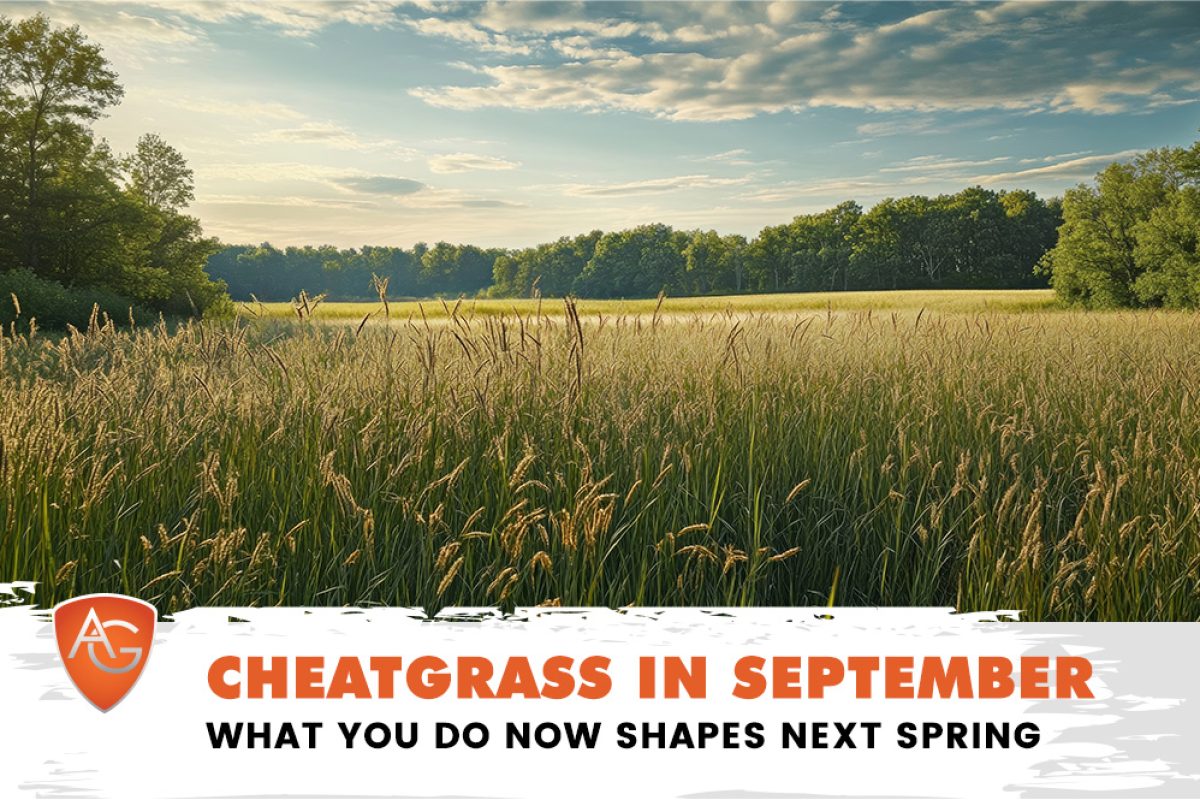Overview: Cheatgrass threatens Wyoming pastures every spring, but September is the time to fight back. Learn how early action protects your grazing land and cattle health with tips from All Around Ag.
If you’ve ranched in Wyoming long enough, you know cheatgrass is more than just a nuisance — it’s a real threat to your grazing ground and livestock. This invasive grass creeps in quietly, takes advantage of bare spots, and before you know it, it’s outcompeting the forage your cattle depend on.
By September, many folks breathe a sigh of relief thinking the season’s battle with cheatgrass is over. The plants are dry, brittle, and fading from sight. But that’s exactly when the danger is greatest. Beneath the soil lies a bank of seed, waiting for fall rains and spring thaw to erupt into another wave of competition.
What you do this month will set the tone for next year’s grazing — and ignoring it now can mean playing catch-up when your cattle need nutrition most.
Why September Matters in Wyoming Pastures
Wyoming’s open rangelands give cheatgrass plenty of opportunities. The plant germinates earlier than most of our native grasses, which means come spring, it steals the water and nutrients before your Timothy, Orchard, or Brome grasses even get a fair start. That head start makes cheatgrass one of the most aggressive invaders in the West.
September is your window to break that cycle. By scouting your ground and taking action now, you reduce the seed bank and help your good grasses stand strong when the snow melts.
Also Read >> Fall Pasture Management: Care Taken During Fall Ensures Grass Growth The Following Spring
Recognizing the Warning Signs
Late summer and early fall cheatgrass is easy to spot once you know what to look for:
-
A reddish or purple tint across patches of ground
-
Long, sharp awns that cling to socks, pant legs, and animal coats
-
Brittle plants crowding out your desirable forage
Those awns aren’t just irritating — they can lodge in cattle mouths, throats, or eyes, leading to health issues no rancher wants to deal with.
Related Reading: Why Cheat-Grass Keeps Coming Back Strong Every Season
Management Steps for Wyoming Ranchers
Scout & Map Infested Areas: Take the time this fall to ride or walk your pastures. Mark out where cheatgrass is worst so you can target your efforts.
Plan Fall Herbicide Applications: Many herbicides are most effective in the fall, right as seeds begin to germinate. Working with your timing now saves you from wasted effort in spring.
Protect Against Overgrazing: Overgrazed pastures are cheatgrass’s favorite territory. Rotate herds or rest certain acres to give your perennial grasses a stronger chance.
Reseed & Reinforce: Where cheatgrass has already thinned your forage, fall is an excellent time to overseed hardy, desirable grasses. Competition is your best weapon.
Tidy Up Corridors: Roadsides, ditch banks, and field edges are common cheatgrass entry points. Clean these up to slow its spread.
Looking Ahead: Spring Grazing Starts Now
Ranchers who invest time in cheatgrass control in September are rewarded in the spring with healthier forage, stronger stands of grass, and better grazing conditions. On the other hand, ignoring cheatgrass this month gives it the upper hand—forcing you to fight it when you should be focusing on your herd.
Wyoming Neighbors Working Together
Cheatgrass doesn’t respect property lines. If you tackle your acres but your neighbor lets it go, the seed will find its way back. Wyoming ranching has always been about community — neighbors helping neighbors. Working together on cheatgrass makes the whole region stronger.
Final Word
Cheatgrass is a persistent enemy, but it doesn’t have to control your pastures. September is your chance to prepare for spring by scouting, reseeding, and keeping your grazing land strong.
At All Around Ag, we stand with Wyoming ranchers who work hard to protect their land and livestock. If you’re looking for dependable hay to keep your herd in top condition while you manage pasture challenges, we’re here with the quality feed you can trust. Give us a call or stop by — we’re proud to be your partner in agriculture.
